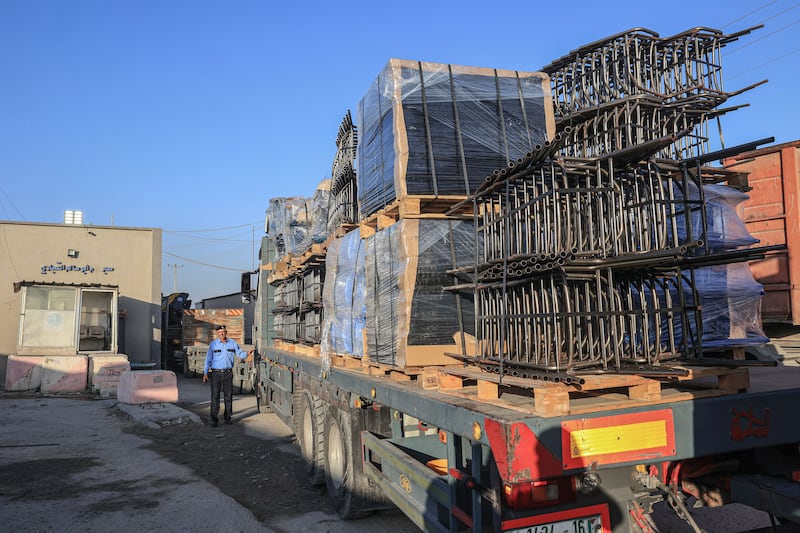Critical humanitarian aid has not reached desperate Gaza despite a tripartite agreement to facilitate the delivery of life-saving supplies which remain in lorries outside Egypt’s crossing into Gaza. The deal reached by US president Joe Biden, his Egyptian counterpart Abdel Fattah el-Sisi and Israeli prime minister Binyamin Netanyahu provided for the entry of 20 lorry-loads of aid.
Since no provisions have entered Gaza for two weeks, Gazans have dwindling supplies of water, food and medicine and there is little fuel for the power plant or hospital generators.
UN secretary general António Guterres has insisted that a one-off delivery will not suffice. He called for 100 lorry-loads of supplies a day and for fuel for hospitals and vehicles delivering aid to the whole of the narrow coastal strip.
But even 100 lorry-loads may not provide the needs of Gaza. The chief of the UN agency caring for Palestinian refugees, Philippe Lazzarini, told the BBC 500 trucks daily had entered Gaza before the war.
Israel-Hizbullah close to ceasefire deal, says Israel’s envoy to Washington
Fall of the house of Assad: a dynasty built on the banality of evil
Gazans mourn 33 Palestinians killed in attack that Israel says targeted militant leader
‘You want peace in the Middle East? I don’t feel there is peace here in Britain’
Egypt’s terminal was not designed for the transit of large volumes of goods and fuel which, during normal times, flow through Israel’s Kerem Shalom crossing, the sole goods and fuel entry facility.

Israel decides and controls what enters and exits Gaza. The transit procedure is time-consuming. Supplies arriving from Israel enter a walled compound at Kerem Shalom on Israeli lorries, are offloaded and inspected, and the Israeli vehicles withdraw. Palestinian lorries arrive, load cargoes and cross into Gaza. Israel would prefer humanitarian supplies to take this route but Gaza’s hungry, dehydrated, ailing and wounded people are out of time, according to UN and international relief agencies.
Israel also operates a passenger terminal at Erez in northern Gaza where Palestinians with Israeli permits can enter Israel. Both Erez and Kerem Shalom closed after October 7th when Hamas fighters invaded southern Israel, killed 1,400 people and took more than 200 hostages.
Palestinian residents, who number 2.2 million, have been trapped and reliant on Israel since Israel imposed a siege and blockade of Gaza after Hamas took control of Gaza in 2007. While Gaza grows fruit and vegetables, its produce is insufficient and harvesting and marketing are impossible during the escalating crisis.
The restoration of electricity is essential if a humanitarian crisis is to be averted. Before the war, Gaza’s small power plant supplied half of the strip’s needs, with Israel supplying the other half. Israel has cut electricity and fuel. Electricity is needed for pumping water from Gaza’s polluted aquifers into households, and sewage to the treatment plant. If the latter does not operate, sewage spills on to the streets and into the sea.
Gazans depend on imported bottled war for drinking and use local water for sanitation, bathing and washing. Many are now drinking “toilet water”.
The lack of fuel for garbage collection means rubbish is piling up in streets and fields. Health hazards have multiplied, especially for the one million Gazans who have been driven from their homes, towns and refugee camps.





